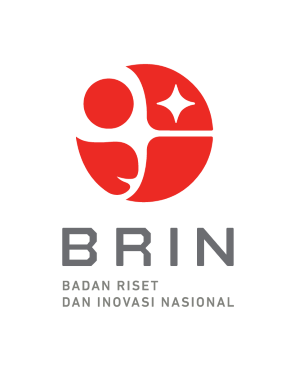PENERAPAN PERUBAHAN UKURAN MATA JARING DALAM PENANGKAPAN IKAN TERBANG SECARA BERKELANJUTAN DI KECAMATAN SENDANA KABUPATEN MAJENE
Abstract
Catching flying fish in Sendana Majene Subdistrict is carried out continuously with gill nets 1-1.5 inches. The catch of flying fish is mostly still young fish (not yet worth catching). The demand for flying fish is quite high due to the existence of special stalls of smoke fly fish around fishing settlements. Apart from smoke flying fish, dried flying fish are also sold as souvenirs. Therefore, fishermen will continue to increase production. Various results of research and field observations show that gill net is able to catch flying fish well but the size of fish caught is dominated by young fish. The effort to increase the net mesh size to 1.5 inches resulted in the diminishing number of young flying fish. Catching flying fish in Majene waters is generally carried out with drifting gill nets with mesh sizes of 1 and 1.25 inches which are very intensive every fishing season while L50 (11.92 cm) and Lm (13.59 cm) for 1 inch more net mesh size were smaller compared to the length of the first gonad maturity, in this case most of the catch is still classified as young fish (Palo, 2009). Partners are a group of flying fish fishermen. Partner problems, flying fish production is getting smaller, group capacity is not strong and group management is still weak. Partners have not been able to obtain assistance facilities from various community empowerment programs carried out by the government. The approach to be used in this service includes: identification, observation, counseling, demonstration, construction, application, assistance, field observation and evaluation monitoring. Indicators of the success of activities are measured based on the results of the application of technology compared to the results of fishing gear commonly used by fishermen. Implementation of service includes counseling, construction of fishing gear, fishing operations and assistance has been going well. The size of 1.5-inch mesh is only able to catch flying fish in a limited amount, while the size of the 1.25-inch mesh can catch flying fish in relatively large numbers. Flying fish caught with 1.25-inch mesh size has passed the size of the first gonad mature so that it supports sustainable fisheries.
References
Ali, S.A., 2005. Kondisi Sediaan dan Keragaman Populasi Ikan Terbang (Hirundichthys oxycephalus), 1852) di Laut Flores dan Selat Makassar. Disertasi, PASCASARJANA-UH.
Ali, S.A. dan M.N. Nessa, 2006. Status Ilmu Pengetahuan Ikan Terbang di Indonesia. Prosiding. Lokakarya
Nasional Perikanan Ikan Terbang. Makassar, 20-21 September 2005. UNHAS-DKP-PPO LIPI
Ali, S.A., M.N. Nessa, M.I. Djawad dan S.B.A. Omar, 2005. Analisis Struktur Populasi Ikan Terbang (Hirundichthys oxycephalus) dari Laut Flores dan Selat Makassar untuk Penentuan Wilayah Pengelolaan dan Konservasi. Torani, 15 (2) 136-144
Chang H.Y., B. K. CHO, J. S. Park and W. L. Lee, 2007. Mesh selectivity of gill nets for silver promfret (Pampus argenteus). J. Kor. Soc. Fish. Tech., 43(3), 169-175, 2007
Fitrianti R.S., M. M. Kamal dan R. Kurnia, 2014. Analisis Keberlanjutan Perikanan Ikan Terbang di Kabupaten Takalar, Sulawesi Selatan.Depik, 3(2): 118-127
Fridman, A.L., 1988. Calculation for Fishing Gear Designs. FAO-UN, Rome
Najamuddin. 2012. Rancangbangun Alat Penangkap Ikan. Arus Timur. Makassar.
Najamuddin, Palo, M., dan Taufik, M. 2010. Gill net design for flying fish in Majene District. Prosiding Seminar Internasional, Makassar 22 Nopember 2010. Hal 524-535.
Najamuddin, Palo, M., dan Affandi, A. 2011. Rancangbangun jaring insang ikan terbang di Perairan Kabupaten Takalar, Sulawesi Selatan. Prosiding Seminar Nasional Perikanan dan Kelautan, Pekanbaru, 26-27 Okktober 2011. Hal 90-99.
Nomura, M., 1989. Outline of Fishing Gear and Methods. JICA, Tokyo.
Palo, M., 2009. Kajian Penangkapan Ikan Terbang (Exocoetidae) dengan Jaring Insang Hanyut di Perairan Kecamatan Sendana Kabupaten Majene Sulawesi Barat. Tesis, Program Pascasarjana Unhas, Makassar










